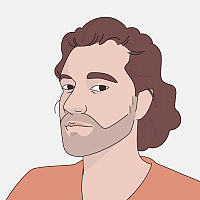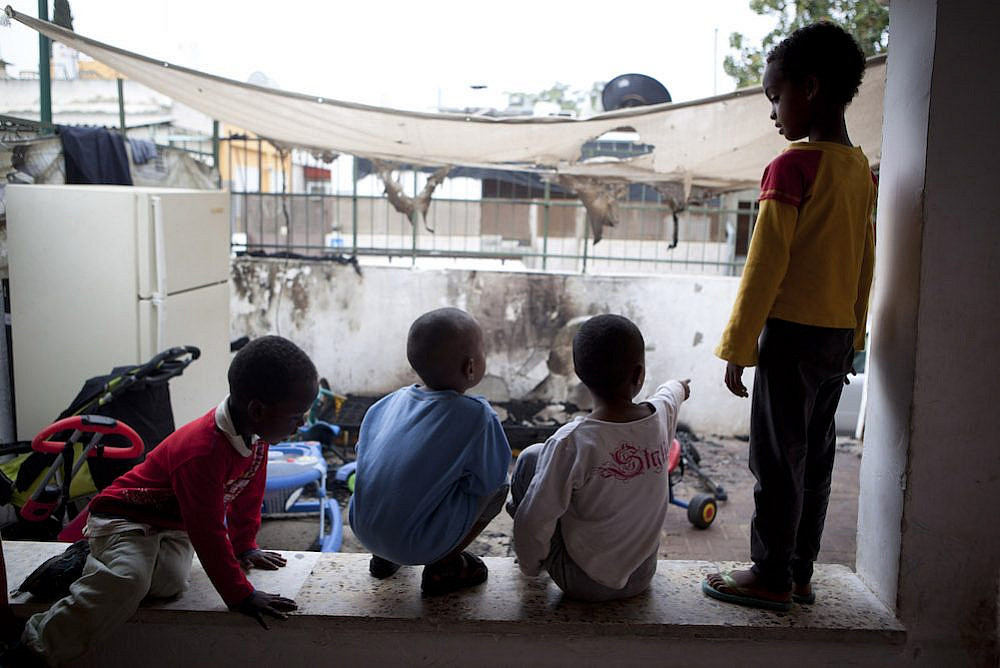Sirak Yekealo is a nine-year-old fourth grader at the Gvanim school in south Tel Aviv. He was born in Israel and has lived here his whole life, but despite being only two years away from middle school, Sirak still struggles with basic Hebrew reading and writing exercises.
The reason is the source of an ongoing struggle between asylum seekers and NGOs on one hand, and the state and municipality on the other: Sirak and his siblings are among thousands of children of African asylum seekers studying in segregated elementary schools and kindergartens in Tel Aviv, starved of resources and isolated from the children of Israeli citizens — in a city that markets itself to the world as the pinnacle of liberalism. Now, their parents have taken to the courts to demand integration.
A Haaretz investigation from December 2020 found that over 90 percent of children of asylum seekers in Tel Aviv’s elementary schools do not share a classroom with a single Israeli child, thus finding themselves in what experts and activists are calling “educational ghettos.” This is despite the fact that Israel’s Students’ Rights Law forbids discrimination in the registration of students on the basis of ethnicity, nationality, or religion, and in spite of various Supreme Court rulings from recent decades ordering an end to the segregation of other groups in Israeli schools, such as the children of Ethiopian Jews and Sephardi ultra-Orthodox Jews.
South Tel Aviv is home to more than 10,000 asylum seekers from Eritrea and Sudan. Since their arrival in the country over the past decade and a half, successive Israeli governments have systematically refused or simply ignored their asylum requests in all but a handful of cases, making Israel’s recognition rate of Eritrean and Sudanese asylum seekers the lowest among Western countries at less than 0.5 percent (compared to averages of 60 to 90 percent elsewhere). Dehumanizing rhetoric toward asylum seekers emanates from the highest levels of Israeli politics, where they are routinely described as “infiltrators;” in 2012, Likud MK Miri Regev (who would later become Minister of Culture) called asylum seekers “a cancer in our body.”
The current struggle to end segregation in Tel Aviv’s schools began about three years ago, when Sirak was in first grade. A group of asylum seeker parents, including Sirak’s father Biemnet Yekealo, came together to attempt to force the state and the municipality to enroll their children in integrated schools. They tried all manner of tactics, including going on strike and refusing to send their children to school for several months. “We also wrote a letter to the Tel Aviv municipality, we went to the Ministry of Education in Tel Aviv for several meetings, but it’s always the same story: they don’t have a solution,” says Yekealo.
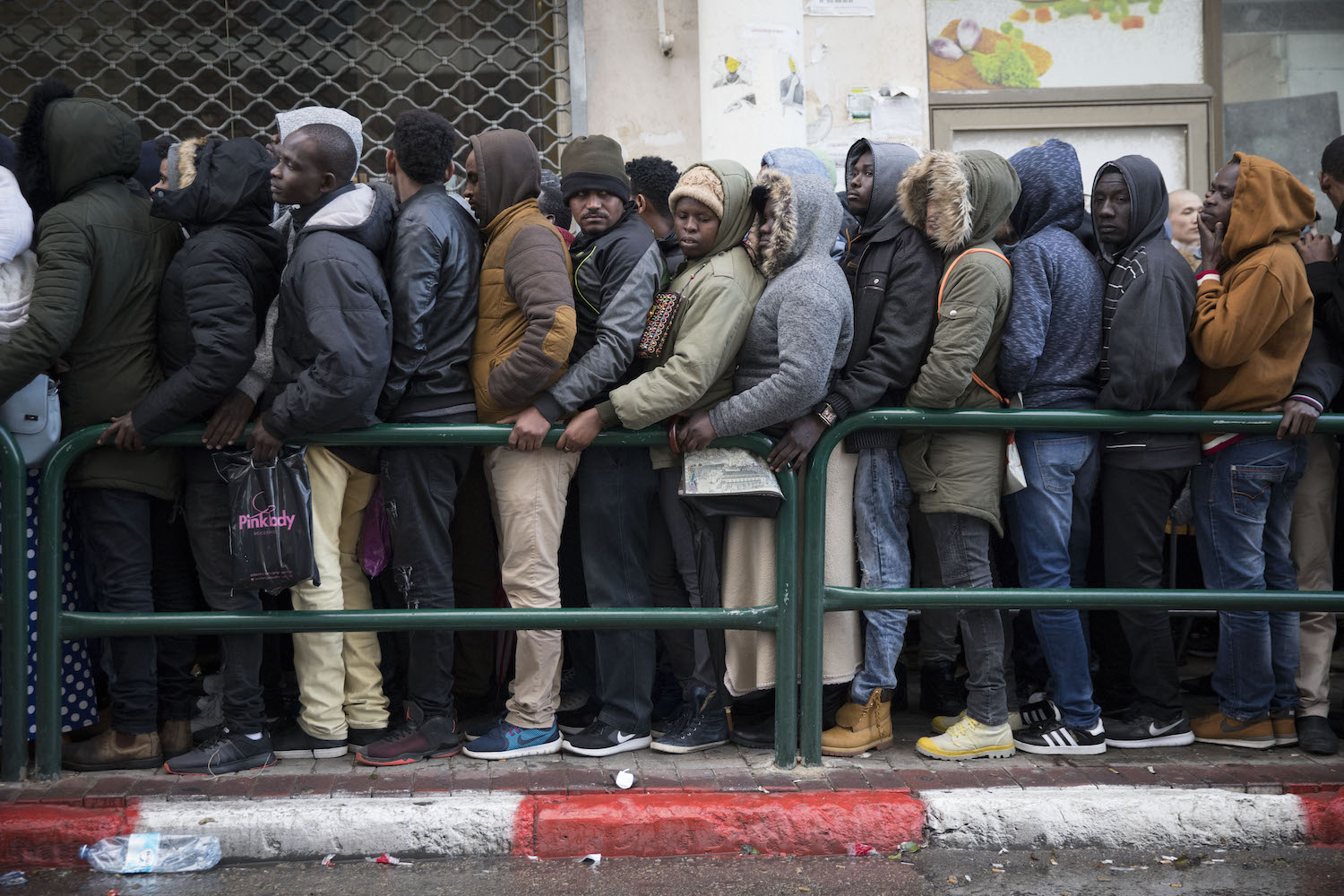
Having exhausted all of their other options, the parents turned to the legal route with the support of several human rights NGOs. After an initial petition for desegregation in November 2020 was rejected by the court, another one was launched in August 2021 on behalf of 325 children of asylum seekers alongside the Association for Civil Rights in Israel (ACRI), the Aid Organization for Refugees and Asylum Seekers in Israel (ASSAF), and the Levinsky Garden Library, which provides after-school educational support for such children in South Tel Aviv. The petition, which is also supported by the parents of nearly 100 Israeli children, was submitted by attorneys Tal Hassin of ACRI and Haran Reichman of the Clinic for Law and Educational Policy at Haifa University.
After two preliminary hearings for the current petition were held at the Tel Aviv District Court in August and December of 2021, a third last week, on Jan. 12, also failed to produce an agreement between the sides. The defendants — the Tel Aviv Municipality and Israel’s Education Ministry, currently led by MK Yifat Shasha-Biton of the right-wing New Hope party — are accused of operating four elementary schools and nearly 60 kindergartens that solely educate the children of asylum seekers, but they deny that they are acting contrary to the law.
Tel Aviv is just the latest focal point in a struggle that has been waged in cities across Israel throughout the past decade. As far back as 2012, a court-mediated agreement ended segregation in schools in the southern city of Eilat, and local struggles against segregation also succeeded more recently in Petah Tikvah and Lod/Lydd, among other cities. In the case of Tel Aviv, however, where the vast majority of asylum seekers in Israel reside, the municipality and the Education Ministry are proving much more obstructive.
A cacophony of excuses
For its part, the Tel Aviv Municipality denies that there is any deliberate segregation in its schools. It argues that whatever separation exists is a result of the concentration of asylum seekers in certain neighborhoods of the city, given that the school registration process aims to enroll children in a facility as close as possible to their home.
In a statement provided to +972, a municipality spokesperson said: “If life were a movie, members of the asylum-seeking community and their children would be scattered among all the neighborhoods and cities in Israel and enjoy the many opportunities that… Israeli society provides. But in the reality we live in, most asylum seekers live in a number of specific neighborhoods around the Central Bus Station and, like all city kids, their children attend schools near their place of residence. We reject any attempt at attributing any hidden intentions to this simple reality.”
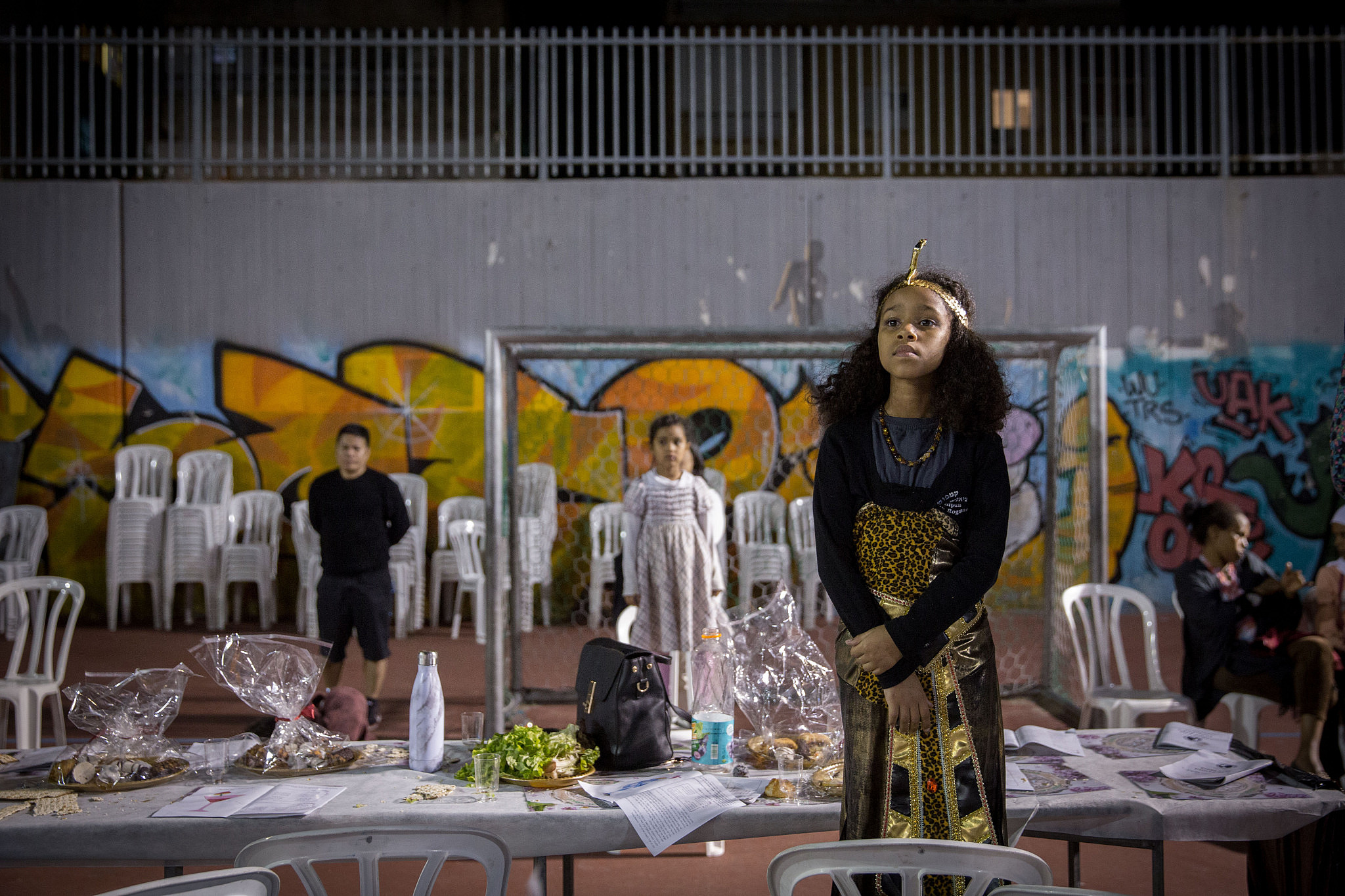
The municipality’s argument of schools reflecting their surrounding demographic reality goes some way toward explaining how two of the four segregated elementary schools — Bialik-Rogozin and Hayarden, both located in the under-resourced neighborhoods of Neve Sha’anan and Hatikva — came to exclusively educate the children of asylum seekers. But Haaretz’s investigation, which reviewed recordings of conversations involving city officials, found that the two other segregated elementary schools — Keshet (opened in 2017) and Gvanim (opened in 2019) — were built by the municipality specifically for the children of asylum seekers. Furthermore, several of the asylum seeker parents who signed the petition stated that their children have been enrolled in kindergartens or schools outside of their neighborhood, despite the existence of integrated alternatives closer to home.
In the eyes of ACRI’s Hassin, the municipality’s response misses the key point. “Our argument is that if the system produces an invalid result [i.e. a situation that violates the law against segregation], then we need to do the enrollment differently — changing or expanding the registration areas, for example. There can’t be a situation in which one group, because of their skin color, finds itself in ‘educational ghettos’ for asylum seekers who arrived from Africa. In the most liberal city in Israel, in the 21st century, it’s just incomprehensible.”
The Education Ministry, meanwhile, has taken a different approach in response to the petition. Not only do they admit that segregation exists in Tel Aviv’s schools, they argue that this segregation is, in fact, a good thing for the children. In an official opinion submitted ahead of the second court hearing last month, the office of the ministry’s chief scientist argued that integrating the children of asylum seekers into schools with Israeli children “will harm their cultural and family roots.” Ending segregation, it continued, would create “cultural unification in a sense that eliminates and blurs the identity and community they come from.”
Yekealo says this is nonsense. “We can keep our culture, they can keep their culture, but through learning together the children can share good things. We can teach them our norms and cultures at home. But in school, it’s something else. The children should learn what the teachers give them.”
The municipality recently offered the lawyers a temporary solution, whereby the children signed onto the petition who are currently studying in grades one to three can be integrated into schools in the north and center of the city, but if the Education Ministry foots the bill for the transportation required to carry this out. The lawyers and the parents agreed, but the ministry refused to provide the transportation.
The impact of segregation
Michal Schendar works as a community organizer at the Levinsky Garden Library. After several years, the staff and volunteers started to notice a dramatic deterioration in the reading and writing ability of the children who were coming for support. According to Schendar, it reached a point where some 70 percent of the children, including those nearing the end of elementary school, were severely struggling. “We couldn’t really understand what the reason for this change was, so we started asking around and worked on a report for which we interviewed teachers, principals, parents, and colleagues from other organizations,” she explains.
Their report, published in June 2020 in coordination with ASSAF, argues that the problem begins even before the children of asylum seekers enter compulsory education at the age of three. “It all goes back to what the community call the ‘babysitters’ — the illegal preschools that the children attend from the ages of zero to three, where there’s no curriculum, no routine, and the teachers have no training,” says Schendar. “When the children reach the municipality-run kindergarten at the age of three and then elementary school at the age of six, the developmental gaps are already very big. Even the most wonderful teacher will not be able to deal with 30 kids with the same difficulties who don’t speak Hebrew and aren’t prepared for elementary school.”
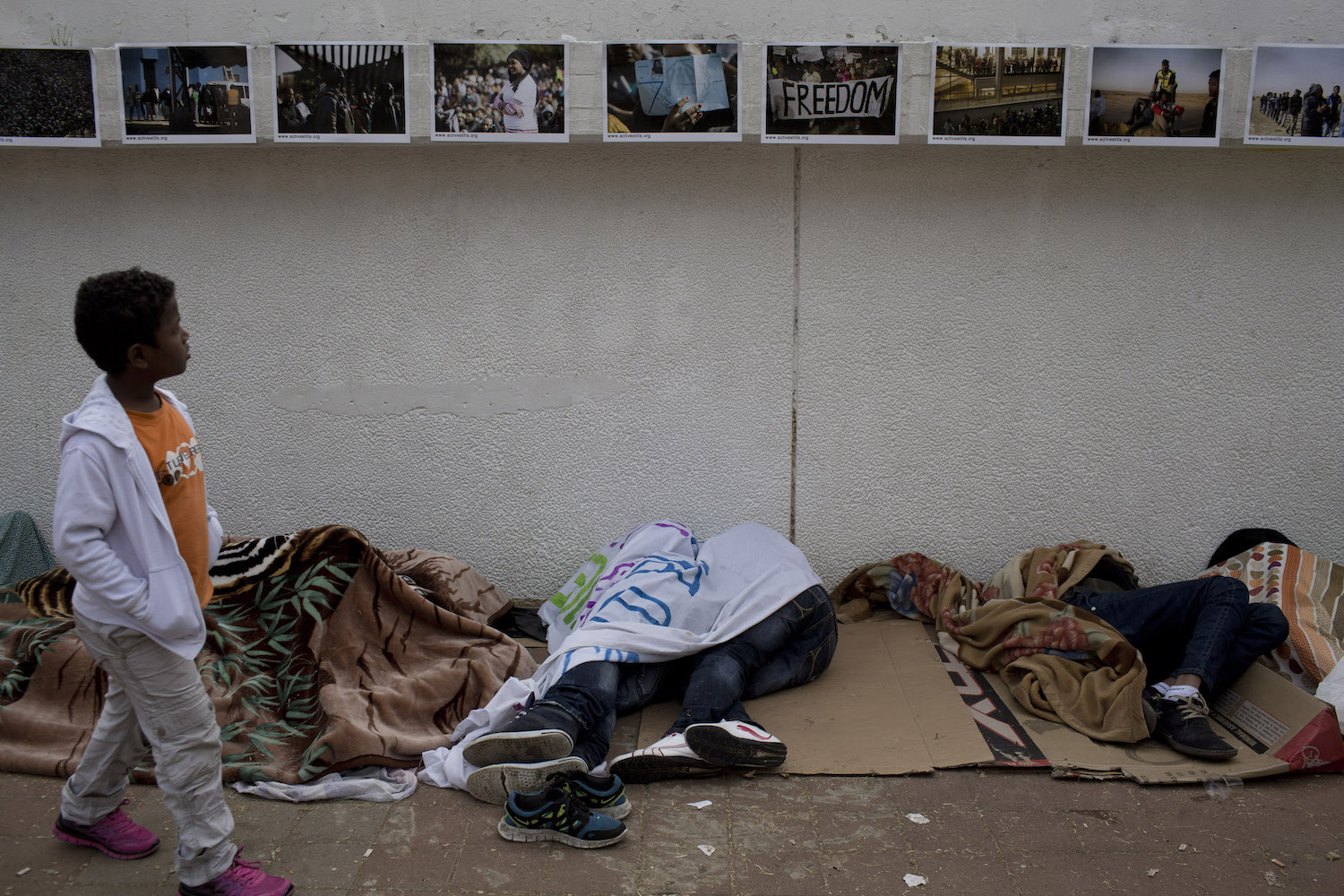
“You have to understand something about this community of asylum seekers,” says Hassin. “Their parents are people who escaped atrocities in their countries of origin, travelled through Sinai, had their limbs cut off, were raped, were kidnapped — these people are arriving with post-trauma that is not being treated because they’re not citizens or residents. They have to work 24 hours a day from the moment they arrive in order to finance their families. They don’t have time to do puzzles with their kids. They don’t have time to tell stories. So their children reach the education system with terribly big gaps.”
After diagnosing the roots of the problem, the Levinsky Garden Library and ASSAF sought to identify solutions. They spoke to experts from academia, including professors of education and child development, and published their recommendations in a second report in December 2020. The conclusion was clear: “All of the people we spoke to said there are many things to fix, but the most important one is to make sure the kids are integrated with Israeli kids in their educational programs, going back to pre-schools and kindergartens,” says Schendar.
“Of course kids learn from their teachers,” Schendar continues, “but they learn best from one another, and they learn Hebrew in the breaks and when they communicate with other classmates. When there are 30 kids whose mother tongue is not Hebrew, it will be very hard for them to learn it properly. This affects their academic level, but it also leads to a sense of alienation — these kids know full well that they don’t go to school with Israeli kids, and this can affect their self-worth. The very basic message is: you’re not integrated into Israeli society, and we don’t want you to be integrated into Israeli society.”
The testimony of one of the petitioners, an asylum seeker called Lila Abdullah Ibrahim, illustrates the impact that segregated education has had on her eight-year-old son Amir: “When we walk in the street sometimes… he points to something and asks me if it is ‘only for Israelis’ and if he is not allowed because [he’s] from an African family.”
A holistic solution
For Dr. Marcelo Menahem Weksler, a pedagogy expert with decades of experience working with at-risk children across all sectors of society, the reluctance of the Tel Aviv Municipality and the Education Ministry to integrate the children of African asylum seekers is a symptom of Israel’s overall policy toward the community. “They don’t say it directly, but it’s because their mindset is that ‘the refugees are only here temporarily, so in the meantime we’ll just give them the minimum required by law.’”
An Israeli government plan to forcibly deport tens of thousands of Sudanese and Eritrean asylum seekers to Rwanda and Uganda was halted in 2018 in the face of local and international pressure. But to this day, Israel’s approach toward the community has invariably been to coerce them into leaving. In 2017, for example, Israel enacted a law deducting 20 percent from the salaries of asylum seekers to be placed into a fund that they can only access upon departing the country. The strategy has been successful: more than 30,000 Eritrean and Sudanese asylum seekers have left Israel since 2015 to search for safe haven elsewhere, sometimes with perilous consequences. Today, only 28,000 remain.
This coercion policy is not the only factor explaining the endurance of segregation in Tel Aviv’s schools; there is also strong resistance from some Israeli parents. “What motivates [Mayor Ron] Huldai, in my opinion — it’s reasonable to assume — is pressure from the parents who don’t want to see refugees in their children’s schools. I think in a lot of schools the parents are opposed to integration,” says Weksler.
At the start of this school year, for example, a group of Israeli parents and right-wing activists held a protest in response to a small number of asylum seekers’ children being enrolled at schools in their neighborhoods. One of the activists present, Sheffi Paz, who has been known to harass asylum seekers and their children in public spaces in south Tel Aviv, was arrested in December 2020 for breaking into a kindergarten for asylum seekers’ children. In August 2021, she was banned from entering the Knesset after calling for Meretz MK Gaby Lasky to be executed for suggesting Israel should accept Afghan refugees.
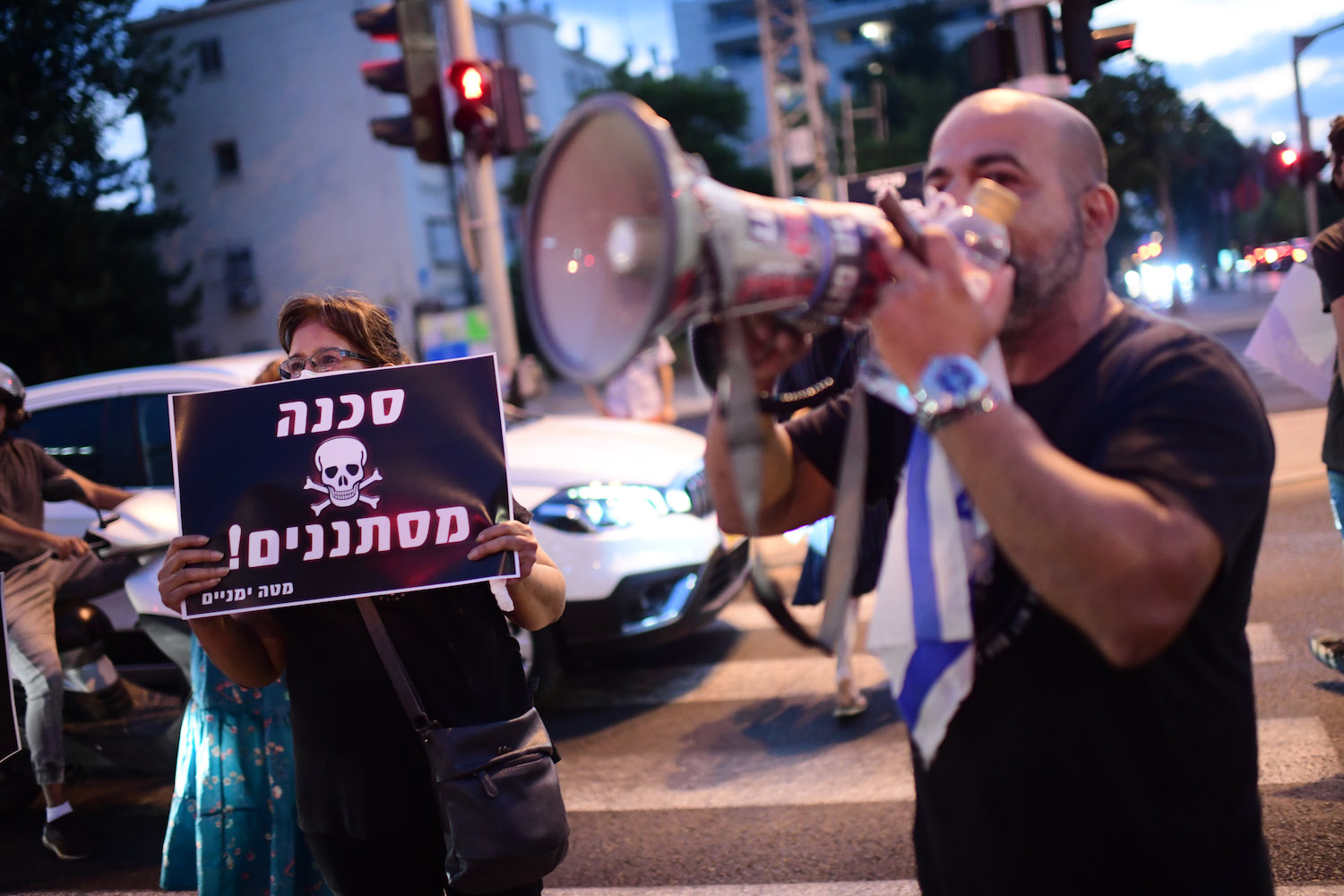
Weksler’s proposal, which is attached to the petition, is to implement a more measured approach that would address the needs of all the stakeholders. “I suggested to place small groups of students slowly into schools in the north and the center that are willing to accept them, and to prepare the teachers in advance with regard to how to accept refugee children, what changes need to be made in the method of teaching, and how to strengthen the process of social integration. That’s the only way to break the ghetto: to take them out and offer them a gateway to integrating into Israeli society,” he explains.
“I’m not talking about [a ratio of] 50:50 or something like that, but taking small groups of five to seven students and putting them in classes,” Weksler continues. “I always compare it to the integration law for children with special needs, which says that parents who want to integrate their children into regular schools are able to do so. They’re always in a minority, and the school is prepared with someone there who helps them. If there’s an integration law for children with special needs, why isn’t there an integration law for refugee children?”
Speaking ahead of the third hearing last week, ACRI’s Hassin was not convinced that the court would reach a definitive verdict anytime soon, especially given that it has the ability to pass the case on to the Supreme Court. “It can also reject the petition, but I don’t think there’s a judge who would want to sign their name onto a decision that authorizes separate educational institutions for African children. I don’t know how it will develop, but there’s no doubt it won’t end here and now.
“In the meantime,” she continues, “we’ll try to move as many children as possible. But the fundamental question on the agenda is if separate educational institutions can exist, and the answer in our opinion is no.”
For his part, Yekealo is looking forward to a future in which his three children can feel part of Israeli society, but fears for their prospects if they are unable to be integrated at school. “Education is the main route, but nothing has changed over the three years that we’ve been struggling. If they are not educated well, I don’t see a bright future for my kids in Israel.”

